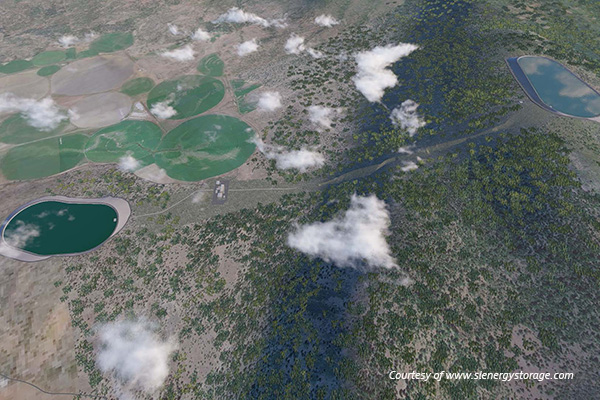
400 MW Swan Lake North Pumped Storage Hydroelectric Project
Client
Kiewit InfrastructureLocation
Oregon, USAHighlights
- Project concept and layout optimization
- Close working relationship with the owner, EPC contractor, and water-to-wire equipment suppliers to fully optimize the project
- Large diameter buried and soil restrained steel penstocks to eliminate the need for expensive concrete anchor blocks
- Fixed speed reversible pump turbines with hydraulic short circuit capability
- FERC licensing support and engagement with FERC Board of Consultants

Overview
The Swan Lake North Pumped Storage Hydroelectric Project is a proposed 400 MW pumped storage hydro project in Klamath County, Oregon. The owner, Copenhagen Infrastructure Partners, is developing the large storage project to provide energy storage and ancillary electrical services into the grids in Oregon and northern California. Located in Klamath County, it will be able to store renewable energy for up to 9.5 hours and then release that energy to power about 125,000 homes. It is a critical part of the transition to a 100% clean electrical grid.
Role
Knight Piésold was retained by EPC contractor, Kiewit Infrastructure, as their lead designer for the project and is responsible for overall optimization and detailed design of the following:
- Lined upper reservoir (Hydraulic Asphalt Concrete [HAC] liner)
- High-pressure penstocks (buried and soil retrained)
- Surface powerhouse (2 x 200 MW reversible Francis pump turbines)
- Low-pressure penstocks (buried and soil restrained)
- Lined lower reservoir (HAC lined)
The upper and lower reservoirs are proposed as fully lined embankment dams, with large diameter buried and soil restrained high-pressure and low-pressure penstocks connecting the reservoirs through a powerhouse with two fixed speed reversible pump turbines.
Results
The project site is very unique for a closed-looped pumped storage hydro arrangement because the lower reservoir is perched on top of a natural butte allowing the powerhouse to be constructed on the surface in the valley below, while still providing adequate submergence on the units to help prevent cavitation in the pumping mode. This arrangement also facilitated the use of surface penstocks in place of tunnels, and Knight Piésold achieved further cost savings for the project by designing fully buried and soil restrained penstocks that eliminated expensive concrete anchor block requirements.
In addition, detailed 4-Quadrant Hydraulic Transient Studies were essential to help further optimize waterways and significantly reduce capital costs with optimized siting of the powerhouse and waterways to eliminate the need for surge facilities.